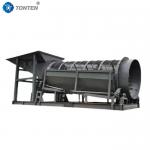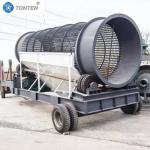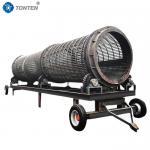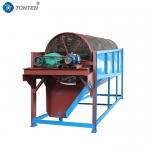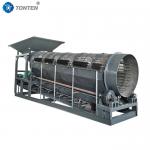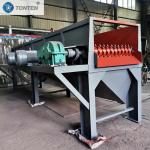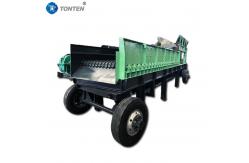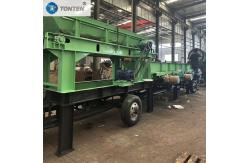Debris Separator Mudstone Separating Machine Construction Waste
Sorting Plant
Mud and rock separators advantages:
1. Mining industry
Improve resource recovery rate: Mud and rock separators can
effectively separate ore and soil, improve the purity of ore and
reduce resource waste.
Reducing production costs: By separating soil, the cost of
subsequent processing and transportation is reduced.
Significant environmental protection effect: Reduces pollution to
the environment and reduces the impact of mud on water bodies.
2. Construction waste industry
Efficient treatment of construction waste: It can quickly process
mixed construction waste and separate recyclable materials such as
bricks, concrete, etc.
Improve working environment: Reduces soil and sewage on the
construction site and improves the construction environment.
Meet environmental standards: Help companies meet increasingly
stringent environmental regulations and promote sustainable
development.
3. River industry
Water purification: It can clean up silt and debris in the river,
improve water quality, and restore the ecological environment.
Flood prevention and disaster reduction: Reduce siltation and
reduce flood risks by regularly cleaning and maintaining the river.
Improve water area utilization: enhance the navigability of rivers
and promote the sustainable use of water transportation and fishery
resources.
Structural configuration of the mud-rock separator:
1. Feeding system
Feeding port: used to feed the mud-rock mixture to be processed
into the machine. The design should take into account the fluidity
and particle size of the material.
Feeding device: usually a vibrating feeder or a screw conveyor is
used to ensure that the material is fed into the separator evenly
and stably.
2. Separation device
Screening system: contains multiple screens, usually multi-layer
screens, which can be separated in layers according to particle
size. Such as coarse screen, medium screen and fine screen.
Vibration device: Vibration is used to move the material on the
screen to enhance the separation effect. Commonly used vibration
methods are electric vibration and mechanical vibration.
3. Separation tank
Sedimentation tank: The core part of the mud-rock separator,
usually used to separate mud and solid particles by gravity. The
tank design is conducive to the flow of mud and the sedimentation
of solids.
Spraying system: used to clean and flush materials to ensure
separation effect and reduce blockage.
4. Discharge system
Mud discharge port: used to discharge the separated mud to a
designated location, usually designed as an inclined type for easy
discharge.
Discharge port: used to collect the separated stones, usually
equipped with a conveyor belt or bucket elevator to transport the
materials to the next processing link.
5. Power system
Motor: provides the power required for the operation of the
equipment, usually equipped with a reducer to adjust the vibration
and conveying speed.
Control system: includes an electric control cabinet and an
operation panel, through which users can adjust the operating
status and parameters of the equipment.
6. Frame and shell
Frame: carries the entire mud-stone separator equipment, usually
made of high-strength steel to ensure the stability and durability
of the equipment.
Protective cover: protects internal components from the external
environment and ensures safe operation.
7. Additional system
Water circulation system: equipped with water pumps and pipes when
necessary to ensure the recycling of water during the separation
process and improve work efficiency.
Parameter:
| | | | Capacity(ton/h) | |
| | | | 10-50 | |
| | | | 50-80 | |
| | 18 | | 80-100 | |
| | 22 | | 150-200 | |
| | | | 200-300 | |
| | 45 | | 300-500 | |
| | | | 500-800 | |
